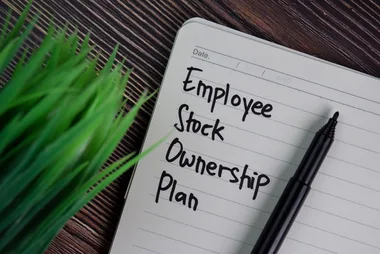ESOPs: Are They Right for You?
If you’re thinking about offering ESOPs to your employees, you might find them appealing because of the way they can help reward those employees who helped you build your business. After all, an ESOP is an aspect of an employee’s retirement plan, and like other tax-advantaged retirement accounts, your employees won’t owe taxes on any money in their ESOP account until money is withdrawn, making it an enticing benefit in the eyes of employees as well.
Why are ESOPs an attractive benefit?
An ESOP can serve as a mighty powerful motivator for employees. Every employee who participates in this benefits-focused plan will own a stake in the corporate ownership of the company. This can be particularly significant if your company is successful.
How do ESOPs work?
With this type of benefits plan, you’ll start by establishing a trust that allows for stocks in your company. Each year, you’ll make tax-deductible contributions that will serve as shares in your company. The trust account that you created will allocate your company shares to the accounts of employees who are participating in the ESOP.
The advantages of an ESOP
If a company is owned by multiple people, an ESOP can only purchase shares from owners who want to sell theirs. This differs from outside buyers who typically want to obtain full ownership of a company.
With an ESOP, owners can sell their shares of the company to ESOPs at their own pace. This makes it possible to gradually withdraw from the company, whether that means stepping into a more limited role or exiting the company entirely, which is a level of flexibility that is hard to achieve with other business sale methods.
That said, even after you sell your shares to an ESOP, you can still stay involved with the company. For instance, you can remain on the company’s board of directors or take on a role that provides guidance to the company.
If your business is a C corporation and you choose to sell your shares of the company to an ESOP, you can defer capital gains taxes indefinitely. According to Internal Revenue Code Section 1042, all you need to do is reinvest the proceeds in the form of stocks and bonds for U.S.-based companies.
On the other hand, since an S corporation does not typically pay corporate income taxes, you — as the S corporation owner — can sell any amount of your company shares to an ESOP and elect to sell even more later if you wish.
If you decide that you only want to sell a portion of your stake in the company, an ESOP provides the opportunity to purchase any percentage of your company’s shares while upholding the option to buy even more over time. This is particularly ideal if private investors are not interested in purchasing stakes in the company.
The disadvantages of an ESOP
One of the limitations of an ESOP is that you can only establish them for C corporations or S corporations, not businesses that are classified as partnerships. Furthermore, private companies with ESOPs must buy back shares from employees who depart from the business, and this can be costly if many employees leave at once or multiple employees retire simultaneously.
ESOPs can be expensive to set up, though they are often less costly than alternative options. Just note that legal fees for the establishment and maintenance of ESOPs typically start at a base level of $125,000.
For companies that employ fewer than a few hundred people, the annual costs associated with ESOP administration and valuation range from $20,000 to $35,000. That said, a simple ESOP that only receives shares or funds to purchase other shares is relatively less expensive.
Furthermore, the tax benefits of an ESOP tend to outweigh the maintenance costs over time. Also, an ESOP cannot pay more than the fair market value for shares. This value is determined by an independent valuation expert, especially when your stock is not publicly traded, so an ESOP might not match a higher offer from a motivated buyer.
You cannot use ESOPs as a means of rewarding specific employees while denying participation to others. Instead, all eligible employees must be included in ESOPs. Also, note that ESOPs require ongoing cash contributions, and your company might need to contribute more to the ESOP than you would to other retirement plans.
If you have an ESOP loan in place, your company will subsequently have limited flexibility in terms of managing cash flow and the timing of payments. Additionally, private companies are responsible for repurchasing shares from former employees once they are vested and have left the company.
For very small companies that employ no more than 20 people, the costs of an ESOP may outweigh the benefits. Therefore, ESOPs are most suitable for companies with sufficient profits as this will give the company the means to afford setup expenses and maintenance costs while still operating successfully and making all necessary ESOP contributions.
As you can see, ESOPs are a way to establish a transition plan. They create a market for your company’s stock, and, in this way, you can then sell your business gradually instead of having to exit suddenly.
Pam Morton
Benefits by Design Insurance Services
415-524-8959 Larkspur, CA office
760-696-3573 Carlsbad, CA office
PamM@benefitsbydesignca.com
www.benefitsbydesignca.com
© 2024 Industry Newsletters




Comments are closed.